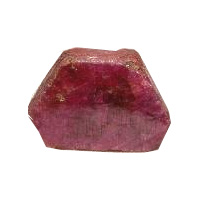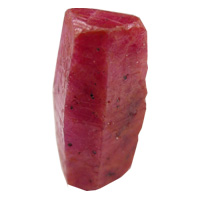History of Rubies
To the ancients, ruby was known as "the king of gems". To some it was a representation of the sun.
To others it represented integrity, devotion, happiness, healing, courage, romance, generosity,
inspiration, and prosperity. According to legend, warriors implanted rubies under their skin to
bring valor in battle. As a talisman, ruby would warn its owner against danger and disaster.
Ground to a fine powder and placed on the tongue, it was believed by some ancient cultures to
cure blood diseases, stop bleeding, ensure good health, bring peace, and treat indigestion.
In England, it was used for coronation rings and to this day enjoys popularity among royalty.
Fergie, the Duchess of York received a ruby engagement ring from Prince Andrew.
The red aura of rubies makes them appear bigger than they really are. Rubies are the scarcest
of all gemstones and command extremely high prices. Their average size is also generally less
than any other gemstone's. Today, rubies have numerous applications: as styluses in turntables,
as tiny bearings in expensive wristwatches, and in rod form, they form a crucial component at
the laser's core.
Ruby is the birthstone of July. Since Ruby represents romance and devotion, it is an excellent
choice for an engagement ring. It is the traditional wedding anniversary gift for a couple's
15th and 40th year.


